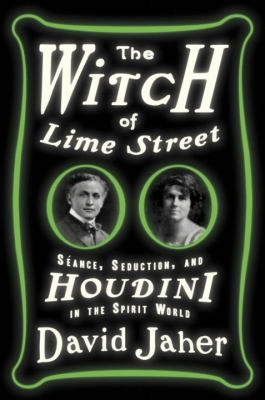Eleventh Stack began publishing content in 2008. That’s eight years of awesome content! We’re highlighting some of our old favorites for Throwback Thursday. The post “Houdini vs. The Afterlife” originally appeared on March 1, 2016.
In the 1920s, America had a brief but intense fling with spiritualism.
spiritualism, n.
3. The belief that the spirits of the dead can hold communication with the living, or make their presence known to them in some way, esp. through a ‘medium’; the system of doctrines or practices founded on this belief. Cf. spiritism n.
“spiritualism, n.” OED Online. Oxford University Press, December 2015. Web. 13 December 2015.
What brought this on? Well, it was the winning combination of World War I and an influenza pandemic. Millions of people died in a relatively short time, and spiritualism gave their bereaved families some hope and comfort—if they could talk to their loved ones through a medium they weren’t really lost forever, right?

Eventually the phenomenon became so widespread that Scientific American decided to hold itself a little contest, with a $2,500 prize for the first medium who could convince a panel of judges that they were the real deal. The panel (which included the illustrious Houdini) debunked many a medium, but wasn’t quite sure what to do about a Boston woman named Mina Crandon, popularly known as “Margery.” The whole trippy story is explained in The Witch of Lime Street, by David Jaher.
Margery claimed to channel the spirit of her deceased brother Walter. Though her, Walter could ring bells in secured boxes, tip weighted scales, fling furniture about willy-nilly, and even alter the speed of a Victrola in another room. He also liked to compose and recite terrible poetry.
“You call it death – this seeming endless sleep;
We call it birth – the soul at last set free.
‘Tis hampered not by time or space –
you weep.
Why weep at death. ‘Tis immortality” (p. 274).
Pick up a copy of the book and you’ll find more bad poetry, inappropriate uses of body parts that I can’t mention in a polite blog, spirit fingerprints made from living dentists, the mysteries of teleplasm, and other delights—including the secrets of Margery’s tricks.
-Amy
Why Weep At Death?
Check out The Witch of Lime StreetAmy E. is a Senior Librarian in the Music, Film & Audio department. She has a fondness for obscure Japanese mystery novels and true tales of the Gilded Age, though neither one really relates to film or audio.
For further clicking and reading:
- The American Variety Stage: Vaudeville and Popular Entertainment, 1870-1920 – newspaper articles about Margery and Houdini from the Library of Congress (you’ll have to search for “Margery”)
- The Harry Houdini Collection – materials about spiritualism and magic, also from the Library of Congress
- Houdini’s Greatest Trick: Debunking Medium Mina Crandon – a nice little article from Mental Floss with a few salacious details
- “Margery” the Medium Exposed – an excerpt from a pamphlet published by Houdini, with fun pictures of how she done it
- The Medium and the Magician – a brief article from Boston University, with a really cool fake spirit photograph
- Skepticism Versus Spiritualism – Scientific American’s interview with David Jaher, author of The Witch of Lime Street
